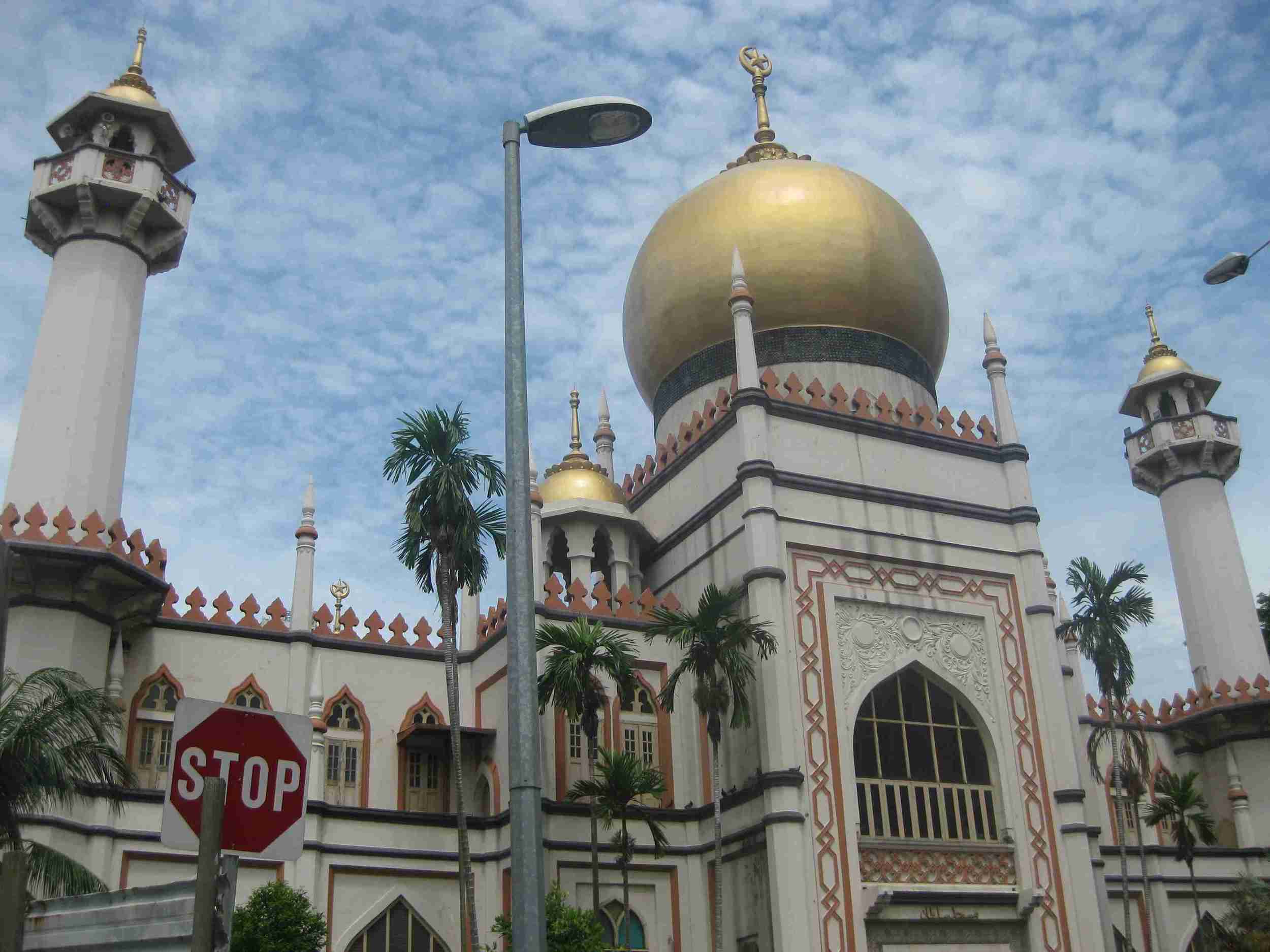The changing face of mosques in Singapore
(from Newzzit; the original story is here http://newzzit.com/stories/the-changing-face-of-mosques-in-singapore)
Doingaway with domes, arches, and minarets; having youth corners instead.

Whenthe Al-Mawaddah Mosque opened in 2009 with its roof-top garden,aluminium exteriors, and Building and Construction Authority (BCA)green-mark-award winning sustainability features, it was a sign thatmosques in Singapore are going through a philosophical change toengage the country's young Muslims and “stay relevant in moderncontext”, as noted by Zaini Osman, head of the mosque policy andplanning division of Majlis Ugama Islam Singapura (MUIS) - also knownas the Islamic Religious Council of Singapore. Osman had told Reutersthen “this is about co-existing with society at large”. Themosque, which is located at Compassvale Bow, has no dome. Instead, ithas a computer equipped youth corner to engage young Muslims.

OmarKampong Melaka Mosque. Probably the oldest surviving mosque inSingapore. Built in 1820 by Syed Omar Ali Aljunied, a wealthymerchant from Sumatra, Indonesia. Rebuilt twice in 1855 and 1981-82,the mosque is now a historical monument as accorded by the SingaporePreservation of Monuments Board.
Theissue was highlighted again in 2011, when during its MosqueConvention, MUIS decided to “review mosque design concept and modelfor next phase of mosque building”. The Council also vowed tointensify its efforts to make mosques in Singapore family, youth andcommunity friendly.
Lastyear in a seminar organised by the National Heritage Board titledSingapore's Islamic Architecture in Transition, Kurjanto Slamet, anarchitect from Ong&Ong, and Tan Kok Hiang, founding director ofForum Architects, argued how modern designs of mosques in Singaporeare a symbol of openness and inconclusiveness. Tan's firm haddesigned the Assyafaah Mosque and was also involved in retrofittingthe Almumkinin Mosque.
Whiledesigning the Assyafaah Mosque, Forum Architects, as noted on themosque's own website “deliberately avoided the literal adaptationof icons typically associated with Islam. These are the dome, thearch, the traditional minaret and traditional arabesque patterns.Quite a few of these traditional symbols stem from Mughal, Ottoman,Mamluk or Safavid cultures, and thus have little relevance to thecultural context of Muslims and Malays in Singapore. However,recognising that 'historical imagery' can be a powerful means ofcommunication, the design adapted and created contemporary versionsof the arch, the minaret and the arabesque patterns. The result isthat the complex is easily identifiable as a mosque, in contemporaryand global Singapore”.
TheSultan Mosque. Dates back to 1823. Located at the historical KampongGlam site. The present mosque structure, which is a combination ofPersian, Moorish and Turkish themes representing the IslamicSaracenic style with big domes and minarets, was completed in 1928.Known for its unique multi-ethnic administration, the mosque isgoverned by a charter put in place in 1914 which stipulated that theBoard of Trustees must represent the six different ethnic groups ofMalays, Arabs, Javanese, Bugis, as well as north and south Indians.
Interestingly,for the first time a mosque design review committee was set-up whichgave design suggestions for the upcoming Punggol Mosque. The finaldesign of the mosque will be unveiled at the ground-breaking ceremonylater this year incorporating the committee's feedback.

Earlierthis year, Yaacob Ibrahim, minister-in-charge for Muslims affairs, atthe MUIS work plan seminar noted that mosques in Singapore are “ asource of tranquillity and solace”. “Mosques are another keysocio-religious institution close to our hearts. We want to createbetter experience at the mosques, both physically and spiritually.Punggol Mosque will be completed by 2015, while the mosques at JurongWest and Woodlands will be ready by 2016. Also, 16 mosques will beundergoing the Mosque Upgrading Programme,” Ibrahim added. Ofthese, seven mosques are up for major upgrading, while nine for minorworks.
Goingahead, MUIS is also looking at friendlier buildings for mosques withbarrier-free infrastructure such as ramps, and toilets for thehandicapped, which will enable mosques to be inclusive and cater to awider community.
History of mosque building in Singapore
In early 19th century, Arab and Indian Muslim traders pooled in resources and built several mosques across the Island. These include the Al-Abrar Mosque (1827), Hajjah Fatimah Mosque (1846) and Abdul Ghafoor Mosque (1850).
Soon after independence, in 1968, the Administration of Muslim Law Act (AMLA) was enacted which led to the establishment of MUIS. One of the functions of MUIS is “to administer all mosques” as stipulated in provision 3.2(e) of AMLA. Seven years later, in 1975, the Mosque Building Fund (MBF) was formed “to raise funds from Muslim employees through the Central Provident Fund (CPF) check-off mechanism to build new generation mosques in new housing estates.” Masjid Muhajirin was the first mosque built under the MBF scheme in 1977 and is now known as Singapore Islamic Hub.
As of now, Singapore has 69 mosques, which are operated through the the Enhanced Mosque Cluster System. These are grouped into five clusters along the boundaries of the Community Development Council (CDC) and with each cluster having between 7 to 29 mosques.
The Central Mosque Cluster is the largest covering 29 mosques. This is further divided into the Central South Cluster with 17 mosques and head-quarters at Al-Amin Mosque, and the Central North Cluster with 12 mosques, and head-quarters at the Al Muttaqin Mosque.
MUIS claims that “while operating as a cluster, the mosques benefit from the economies of scale, share resources and achieve synergy. Via the cluster, mosques are also now able to provide a more holistic intervention and assistance to families in need i.e. the zakat recipients, beyond just monthly cash hand-outs”.
